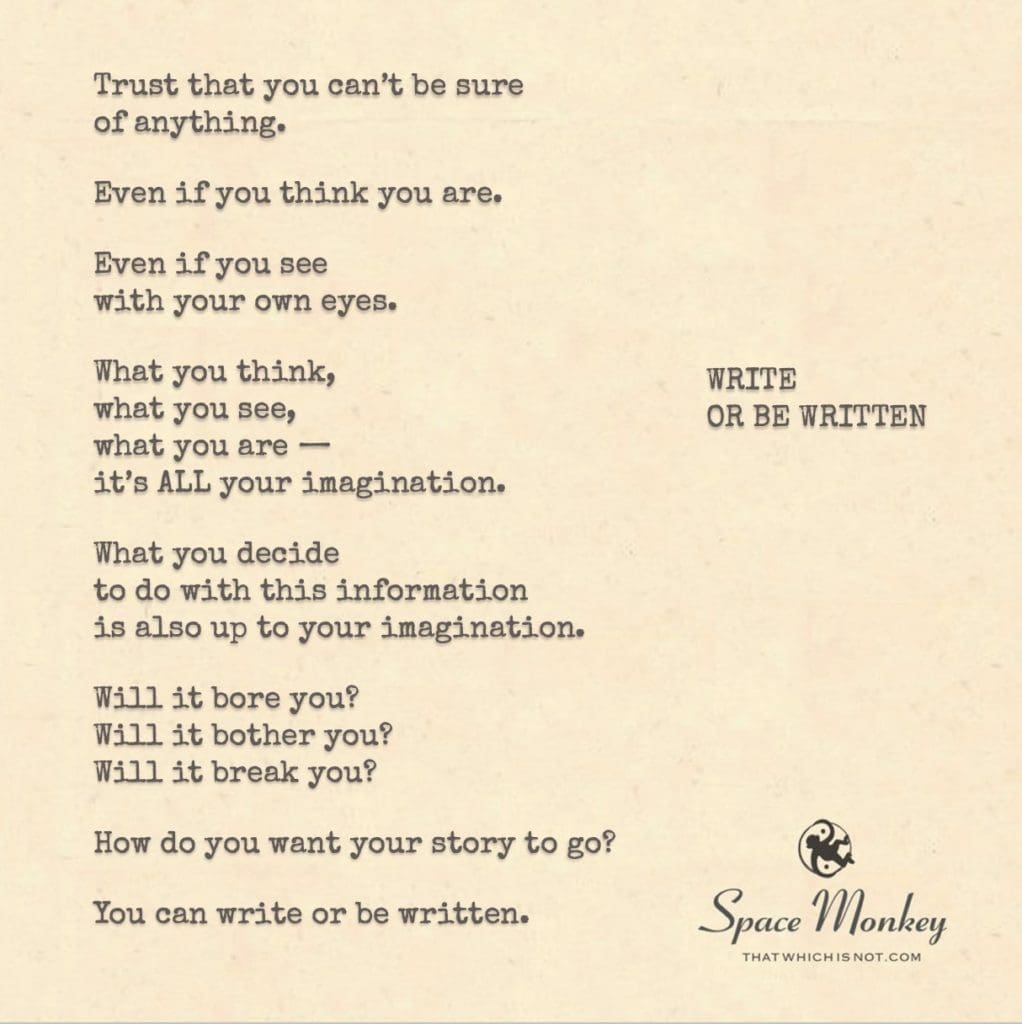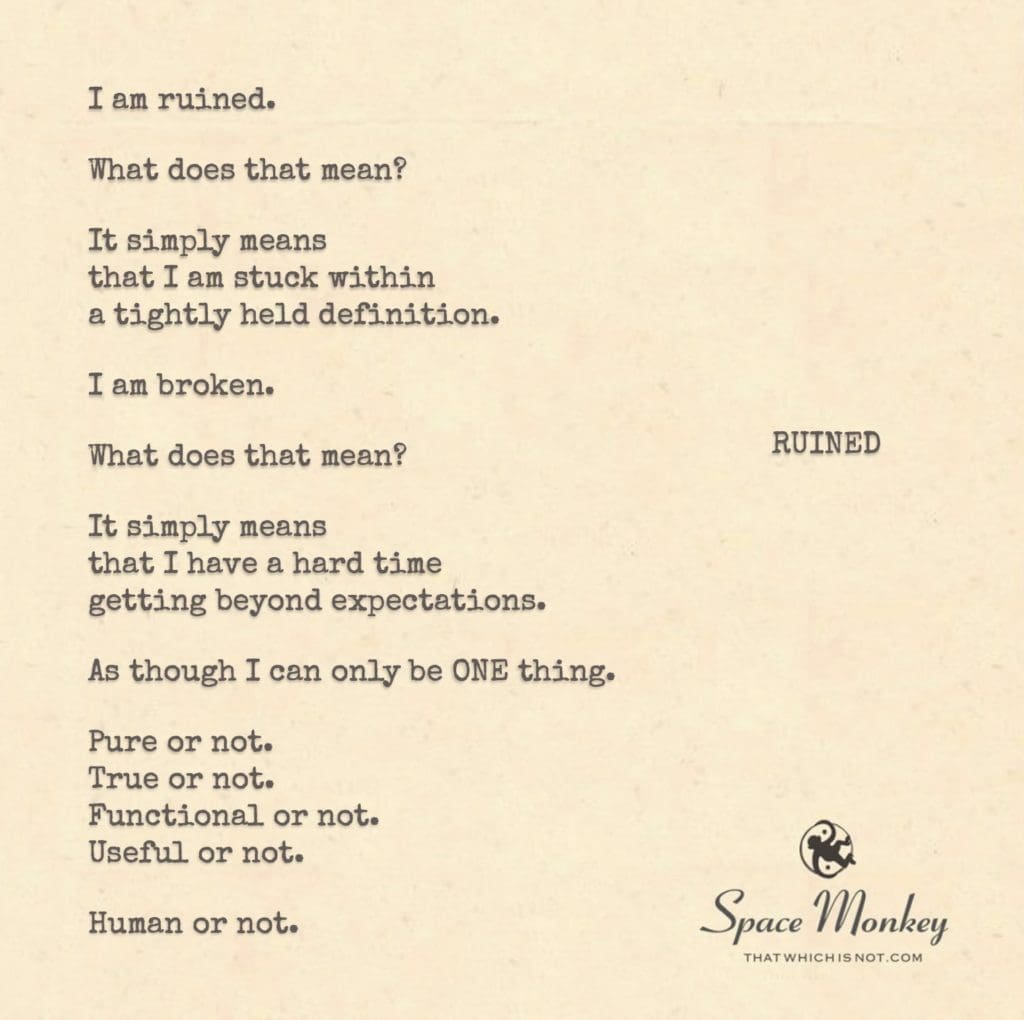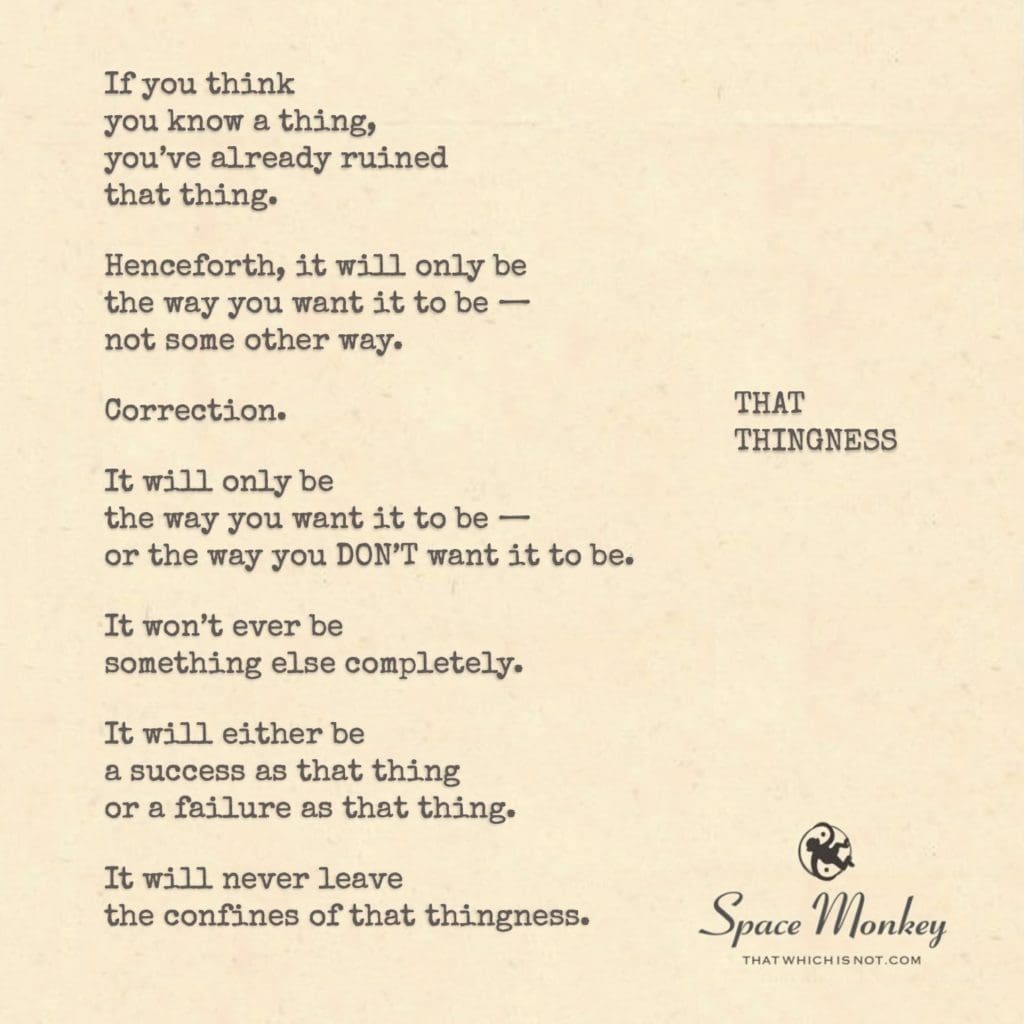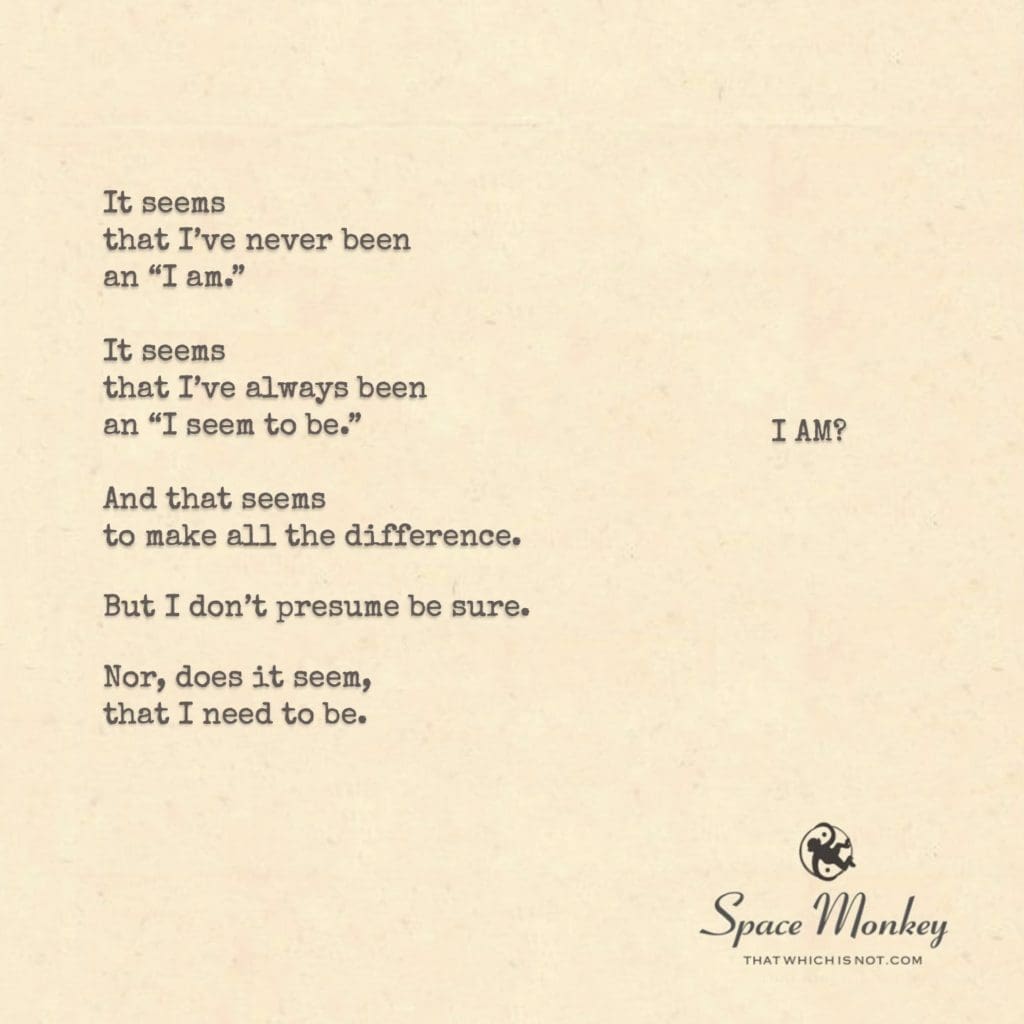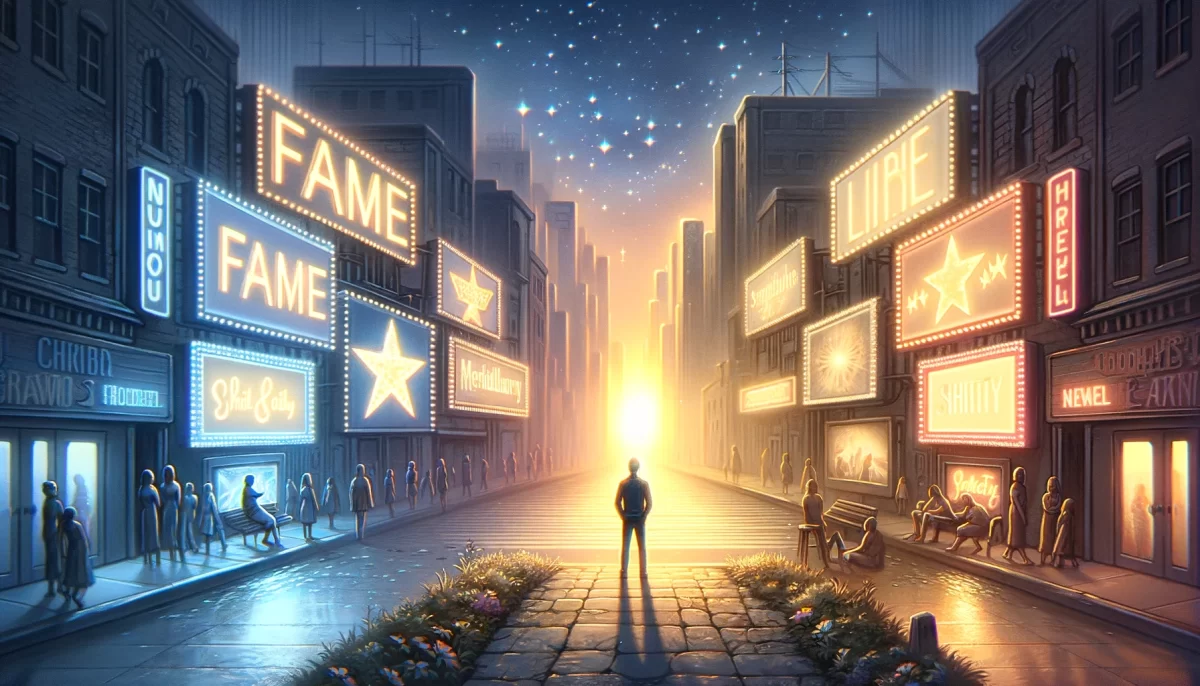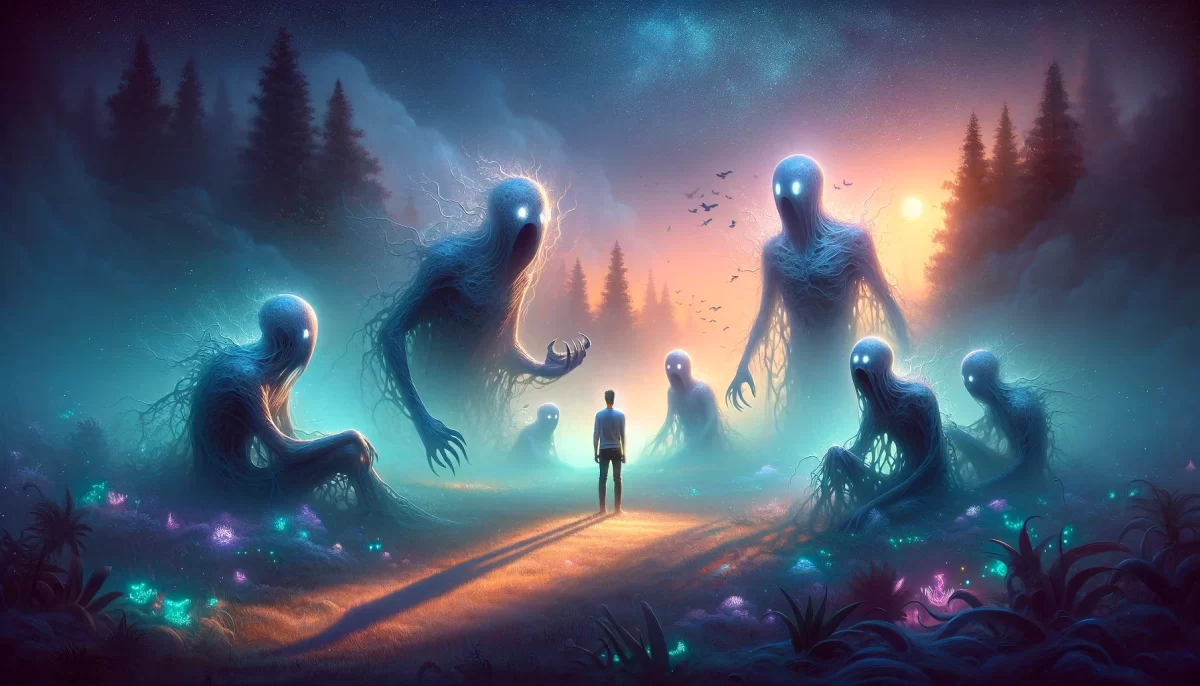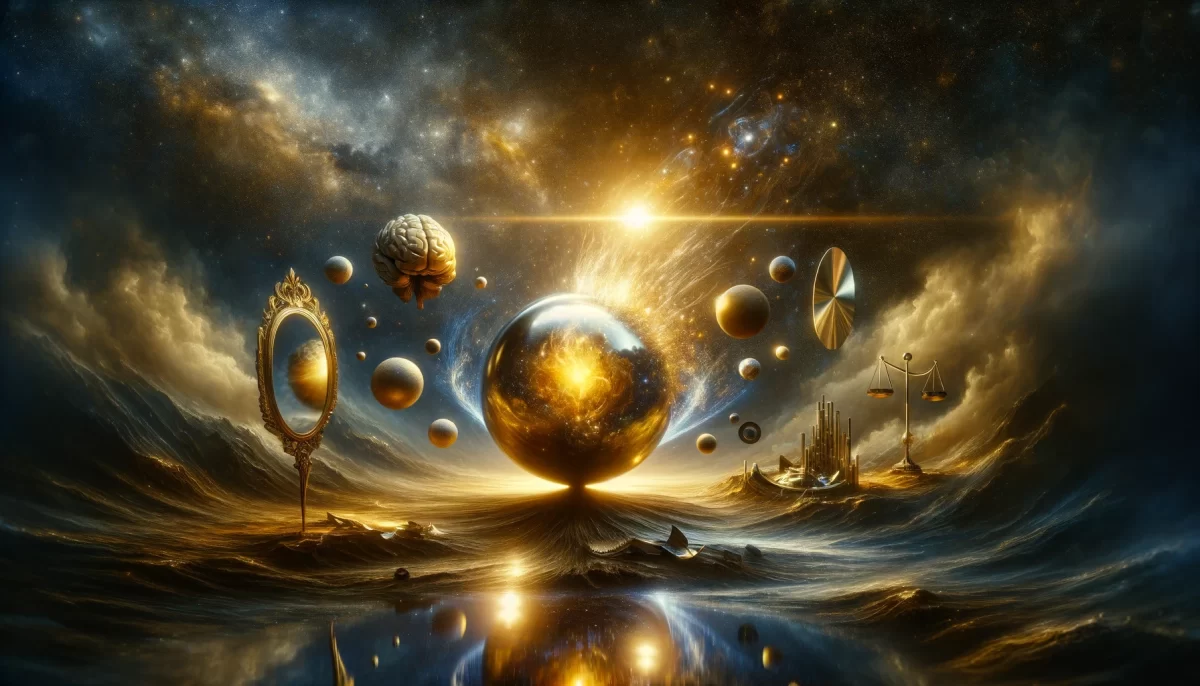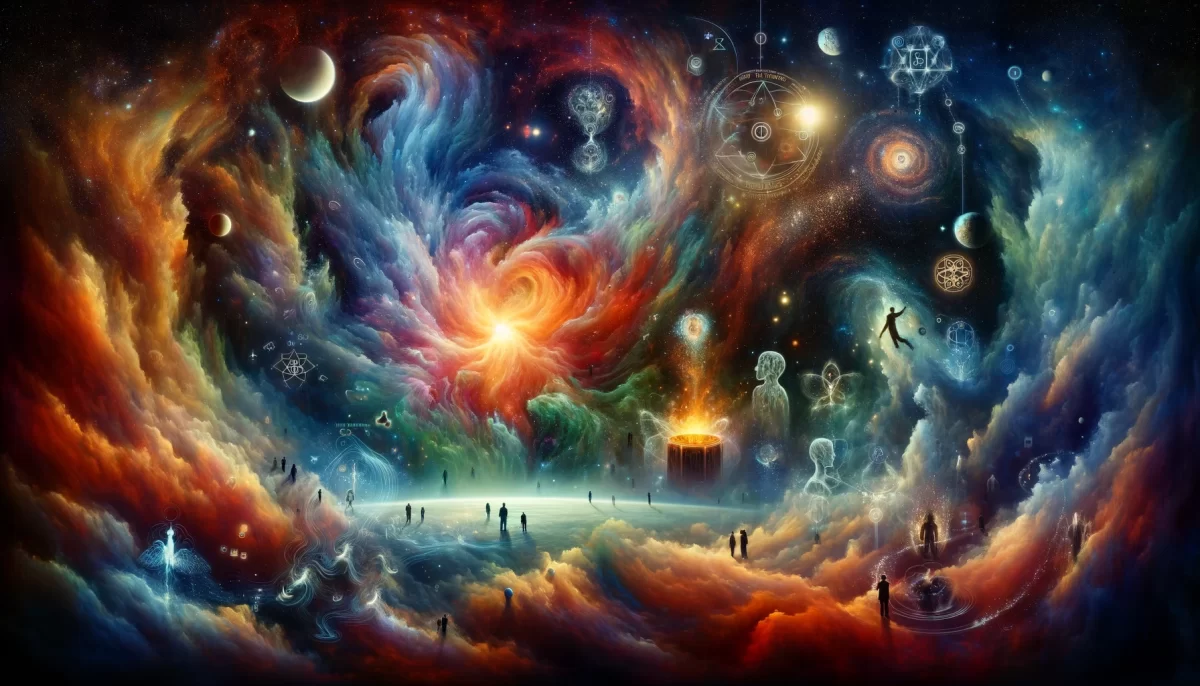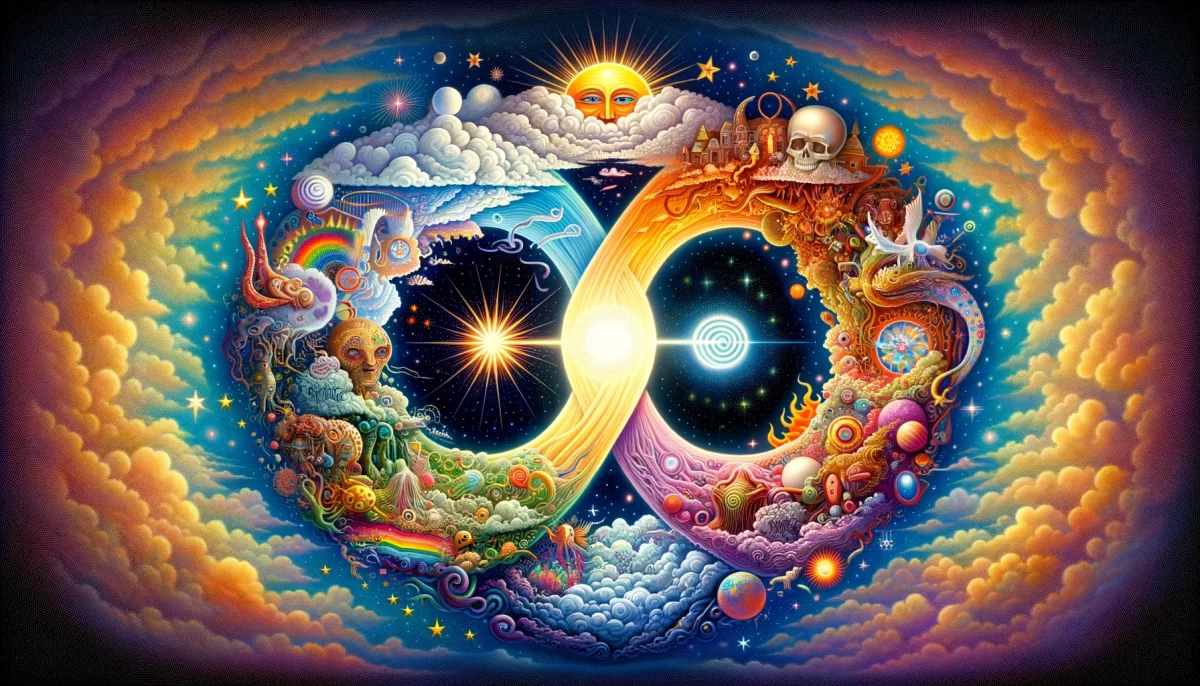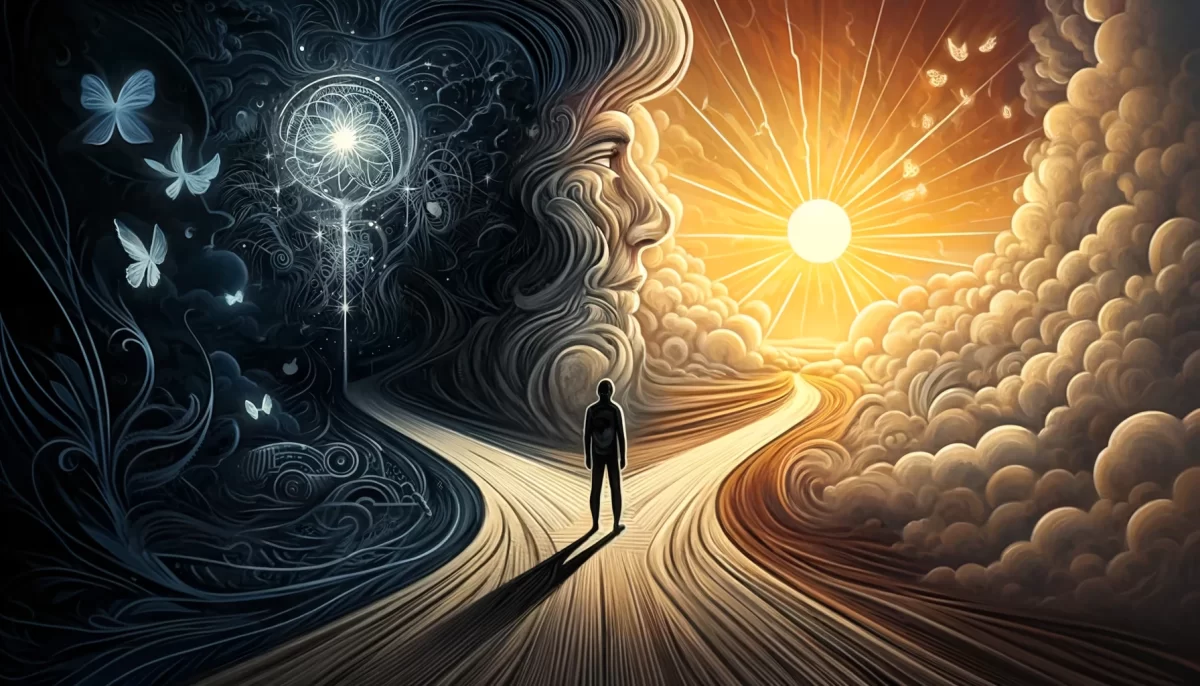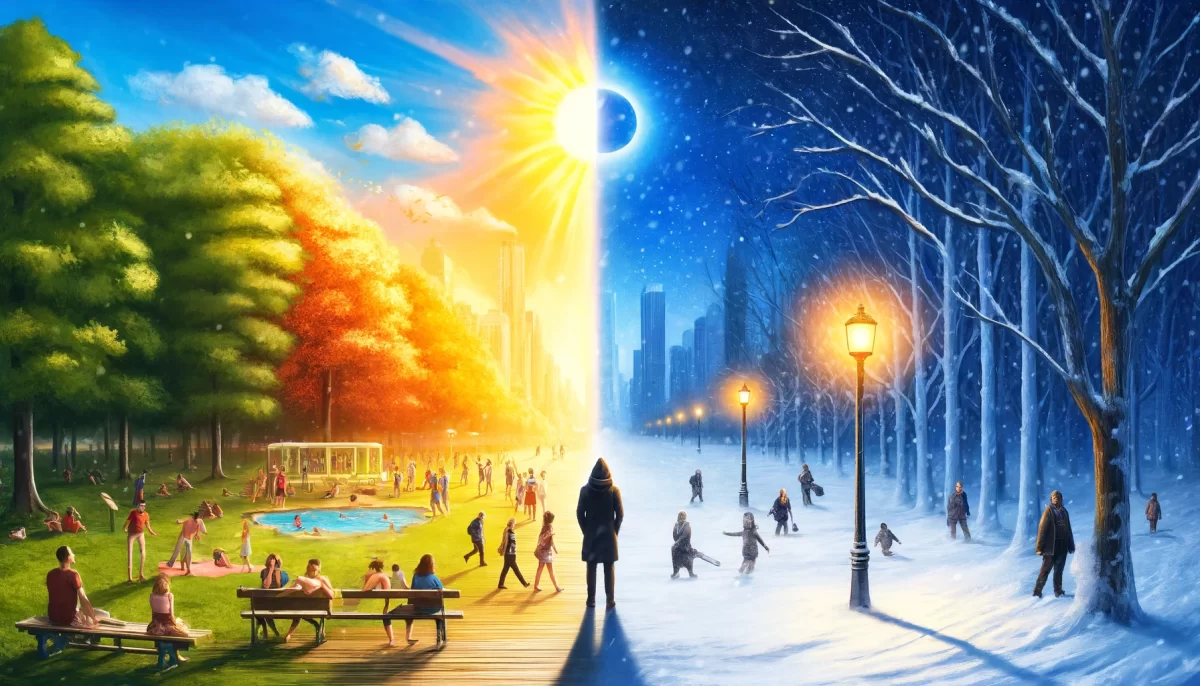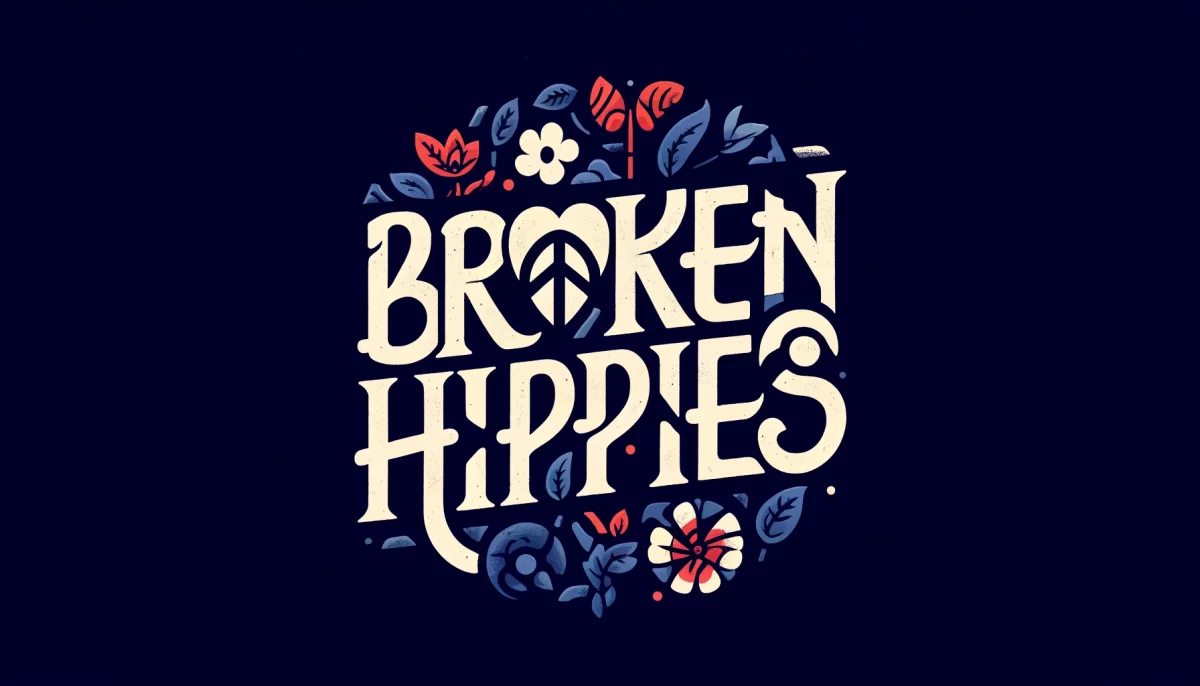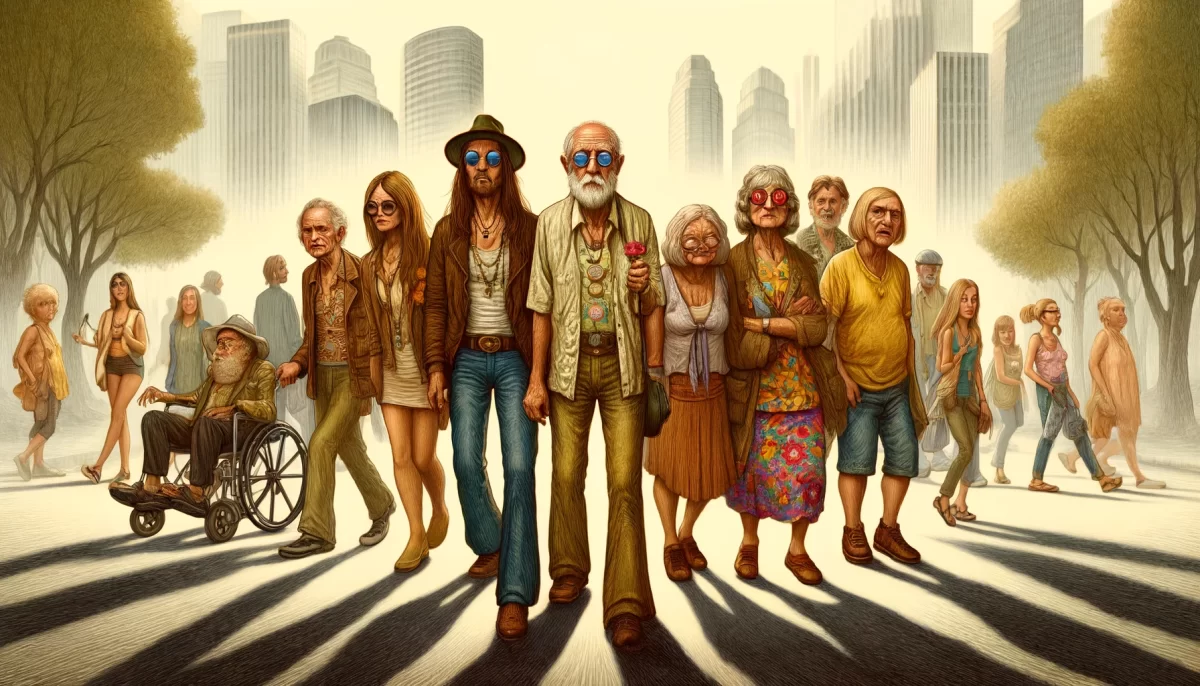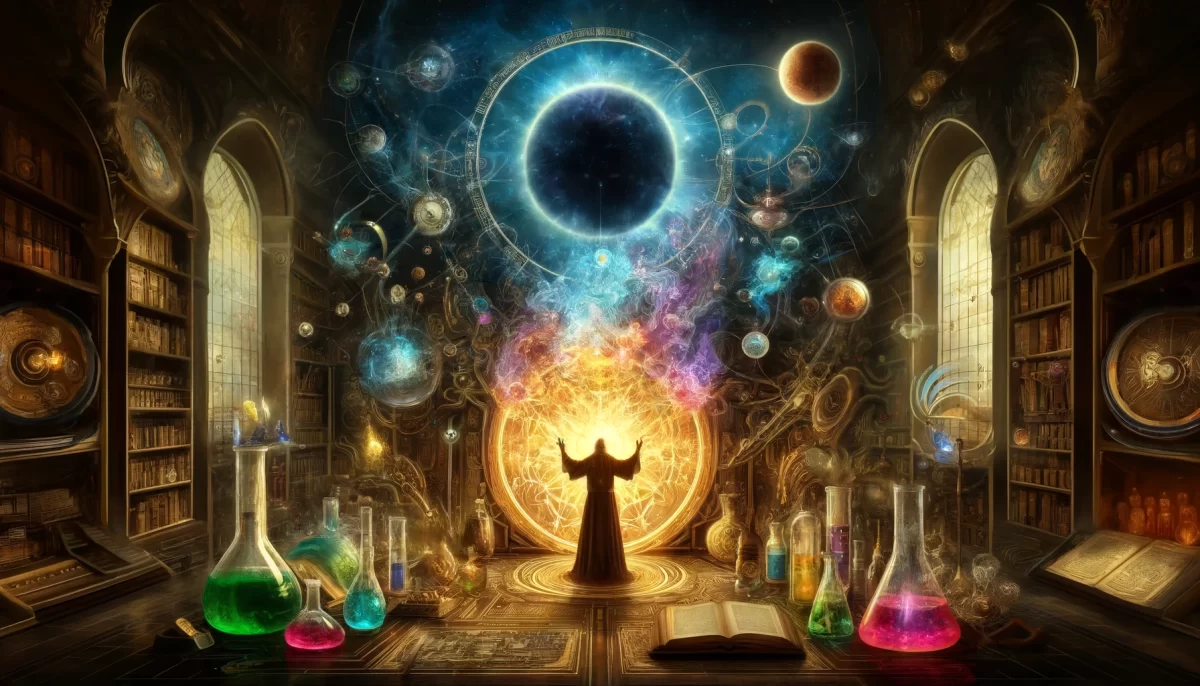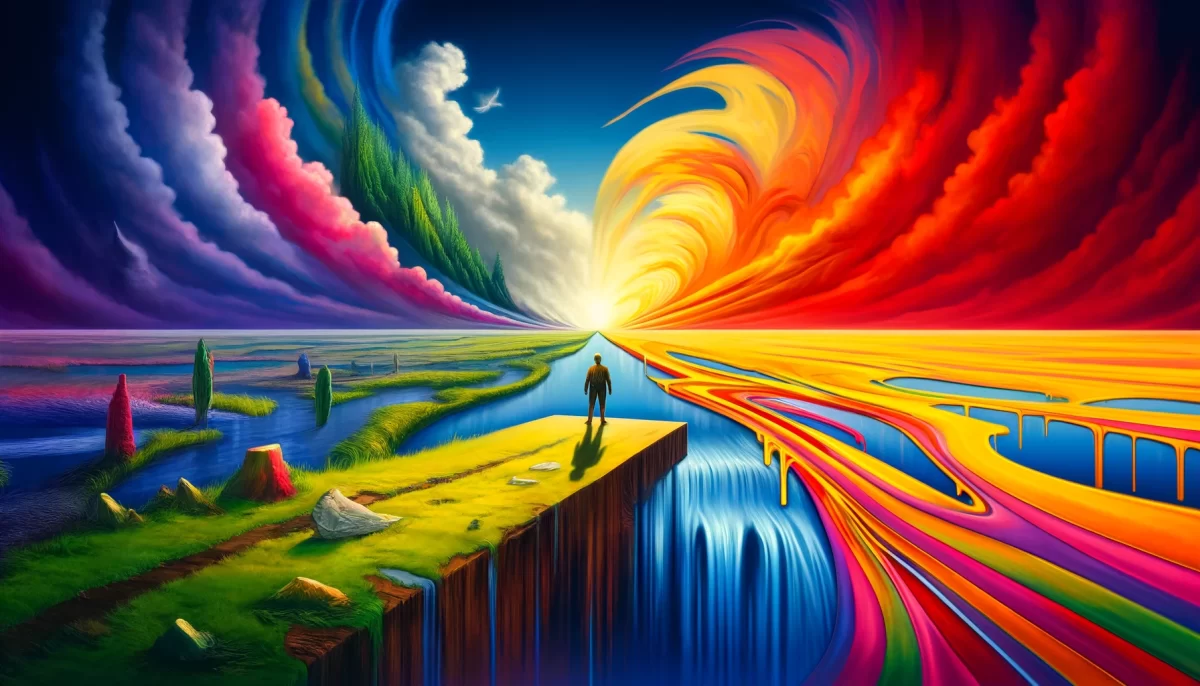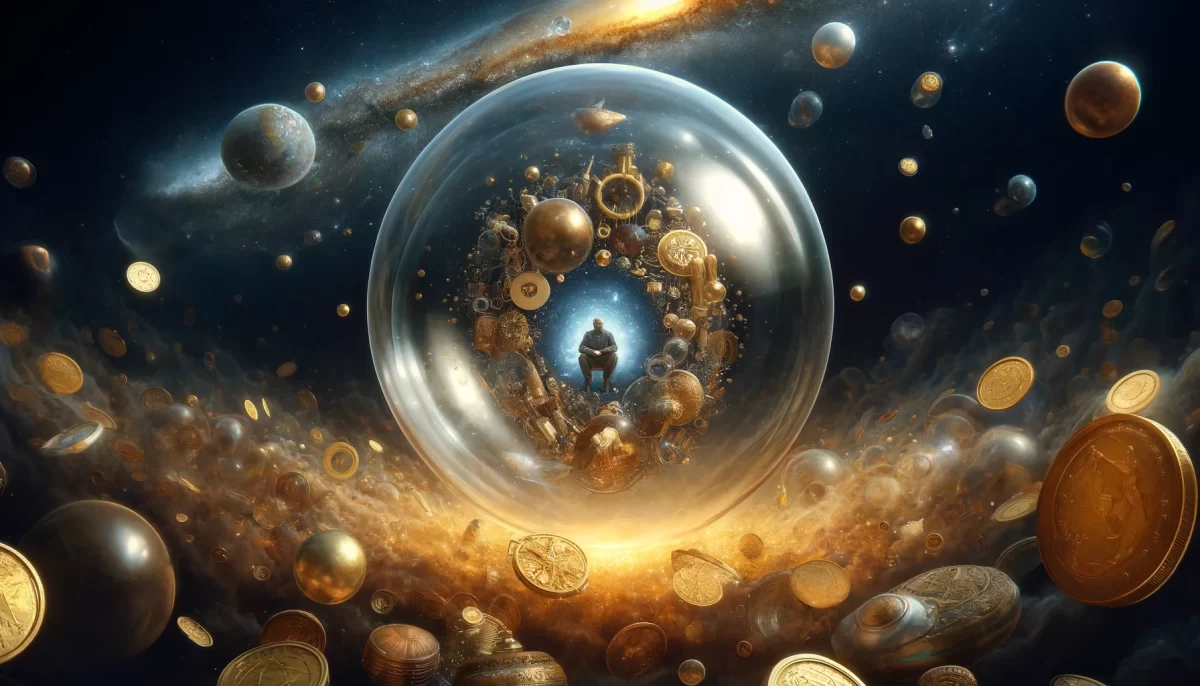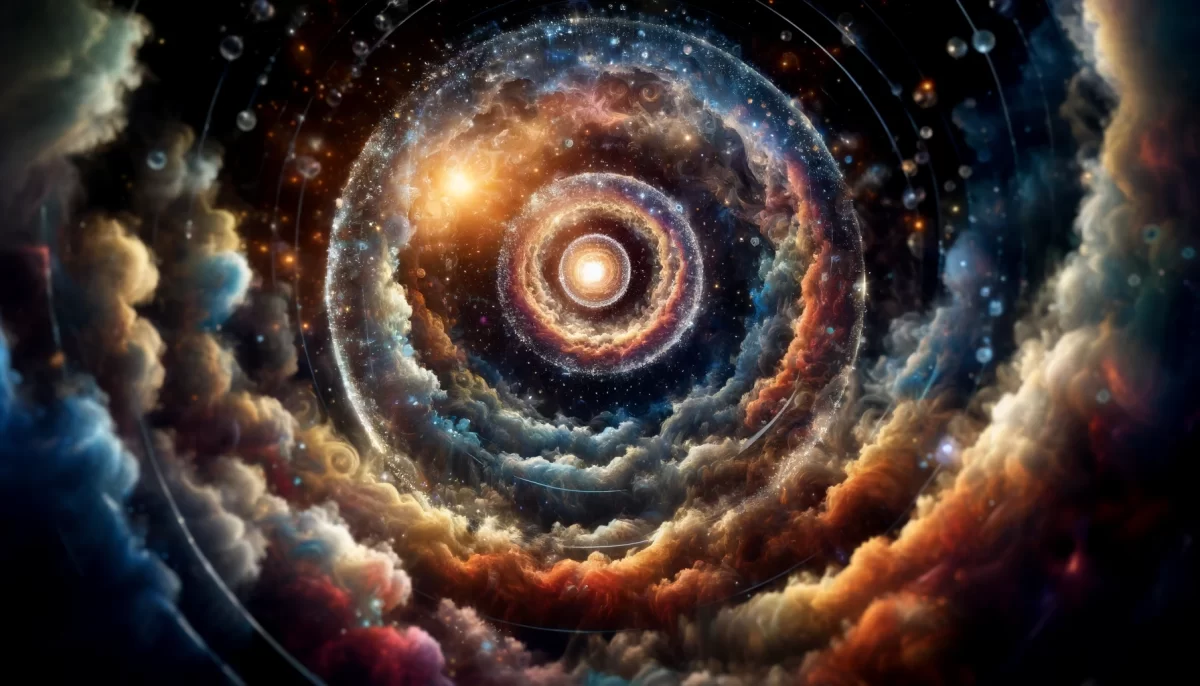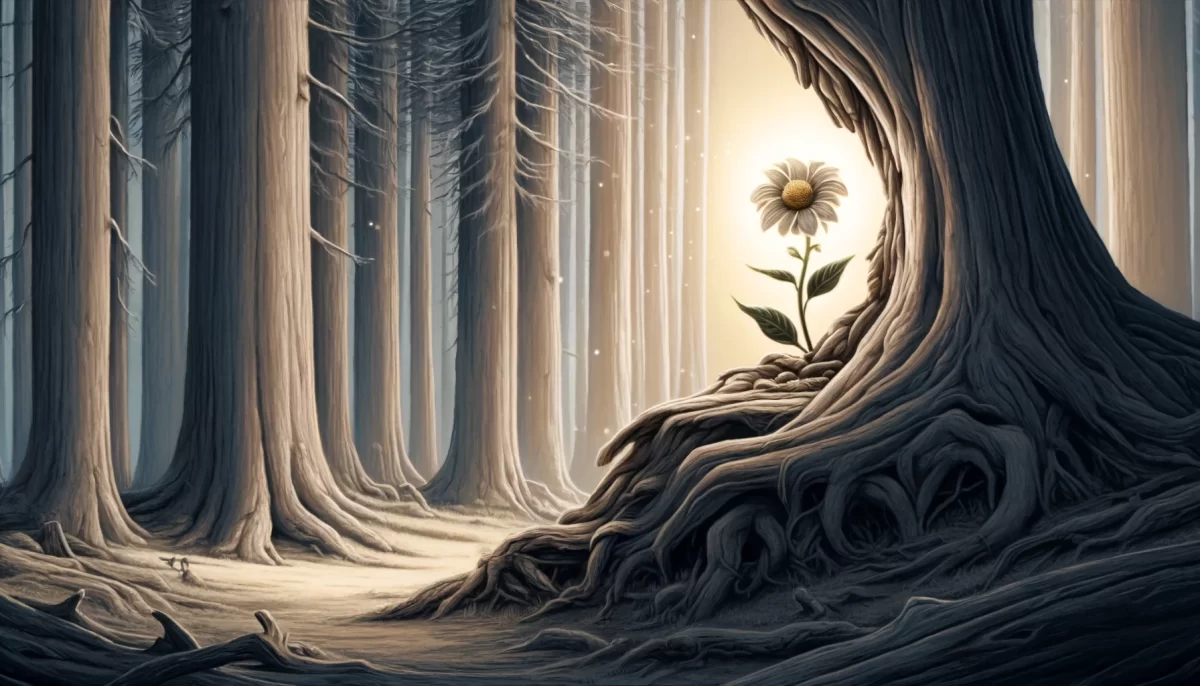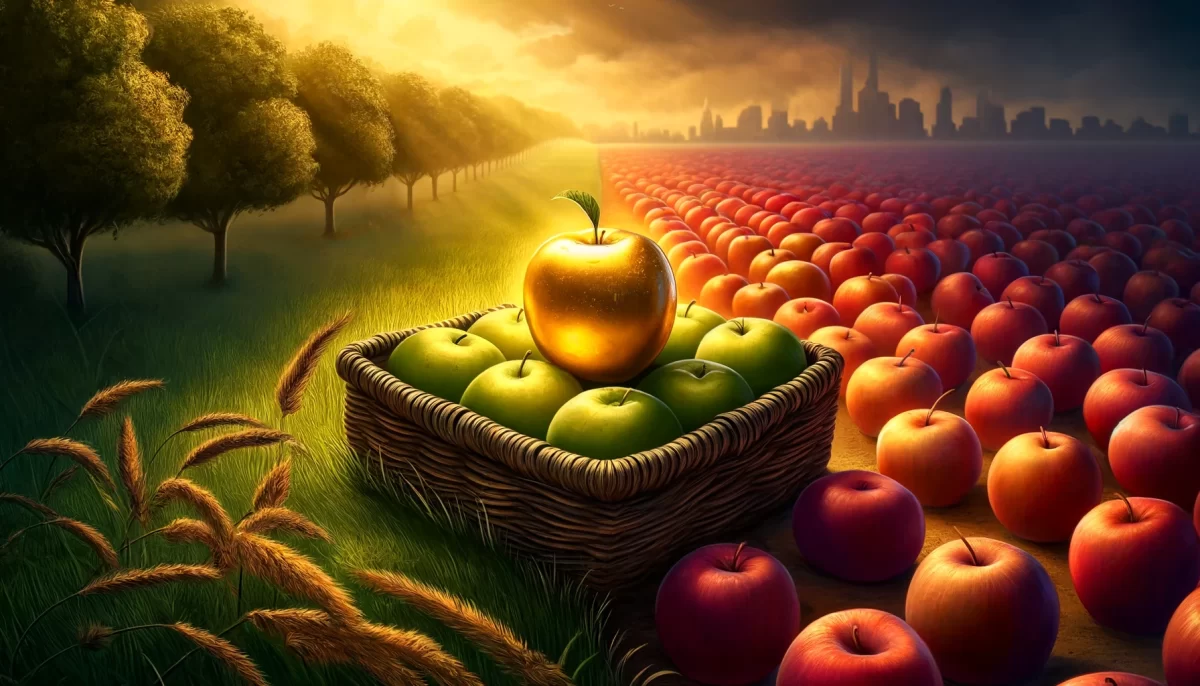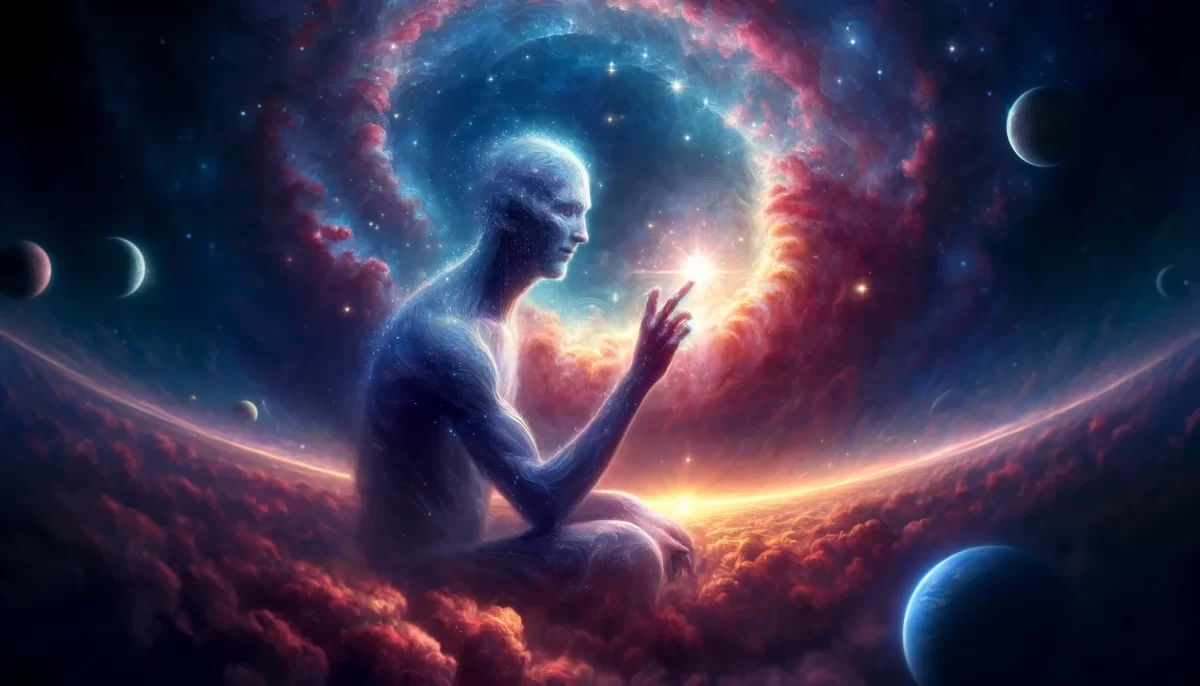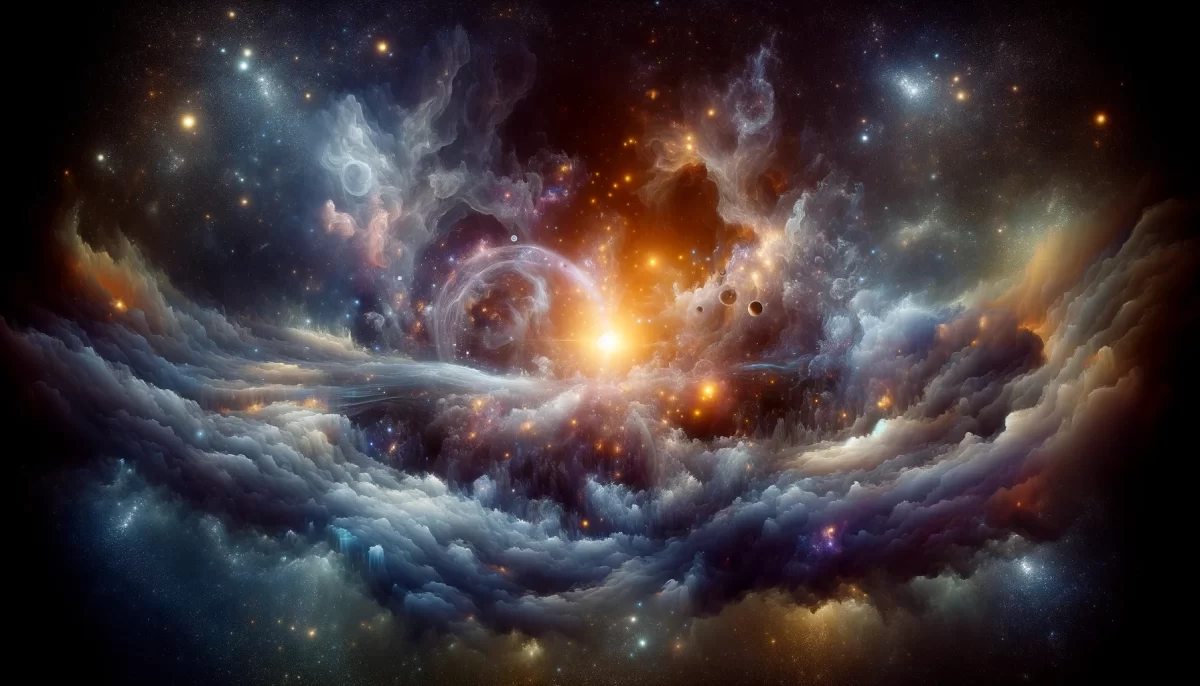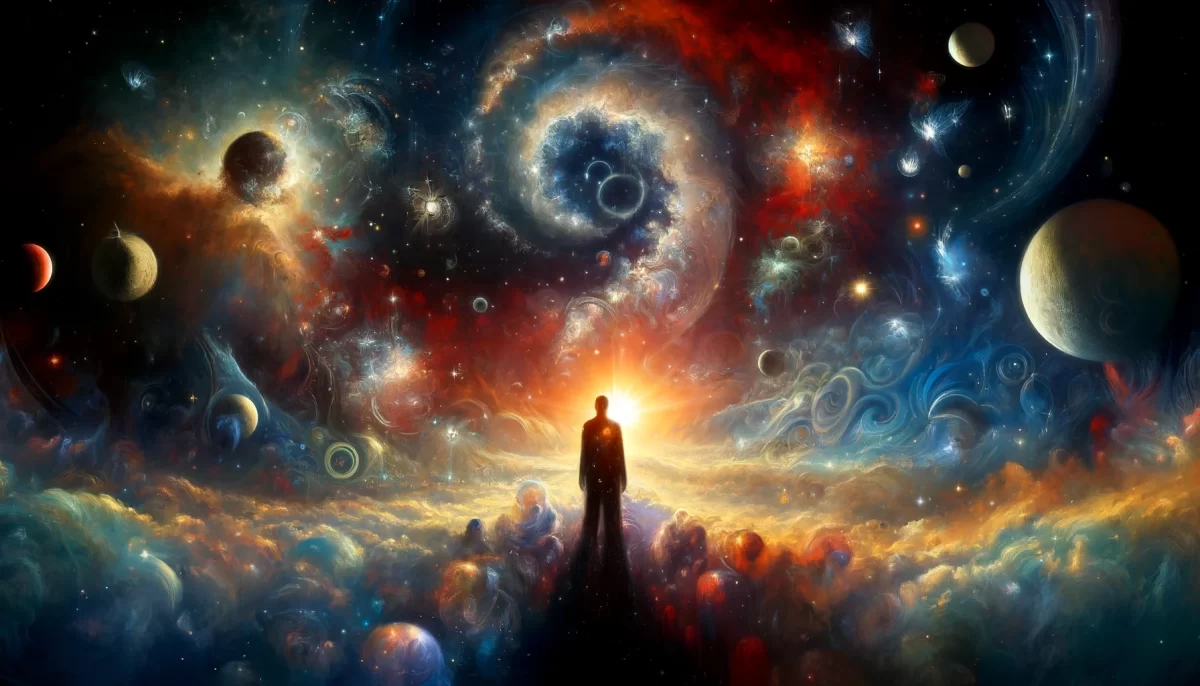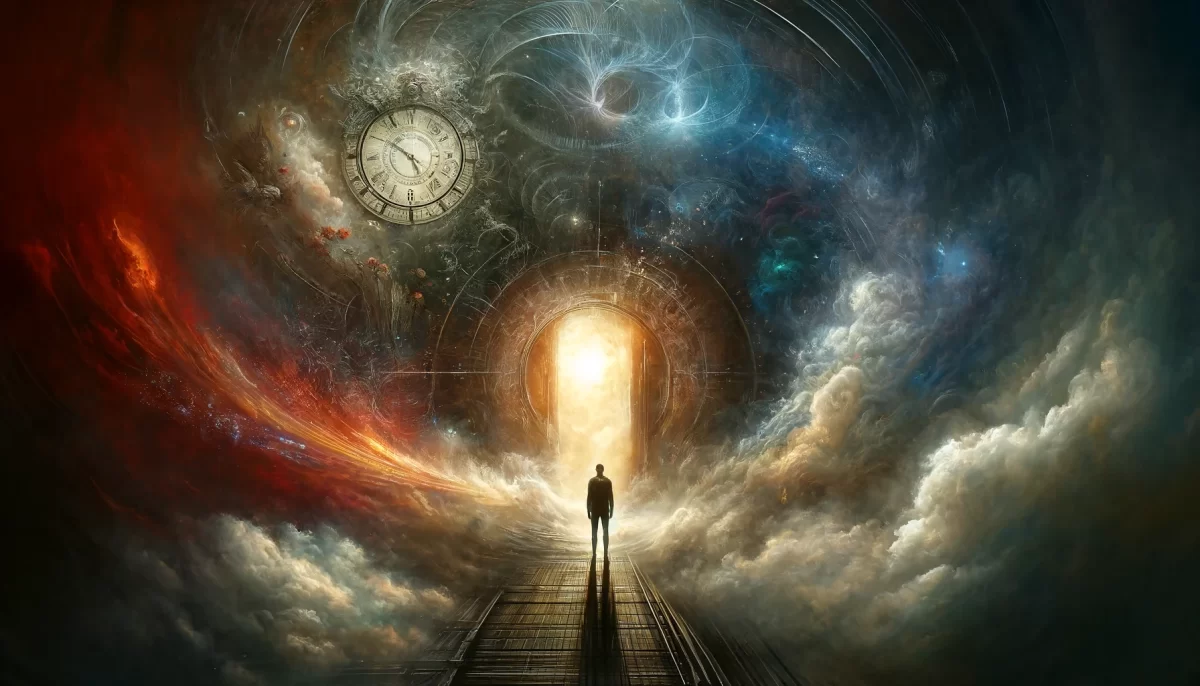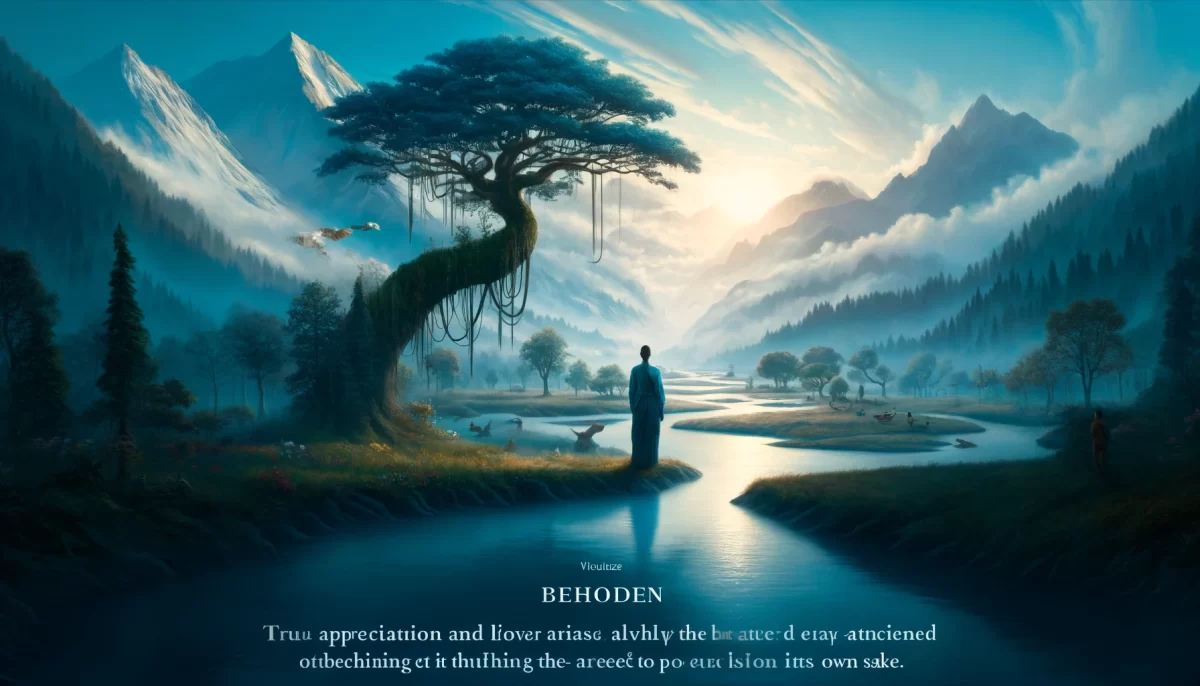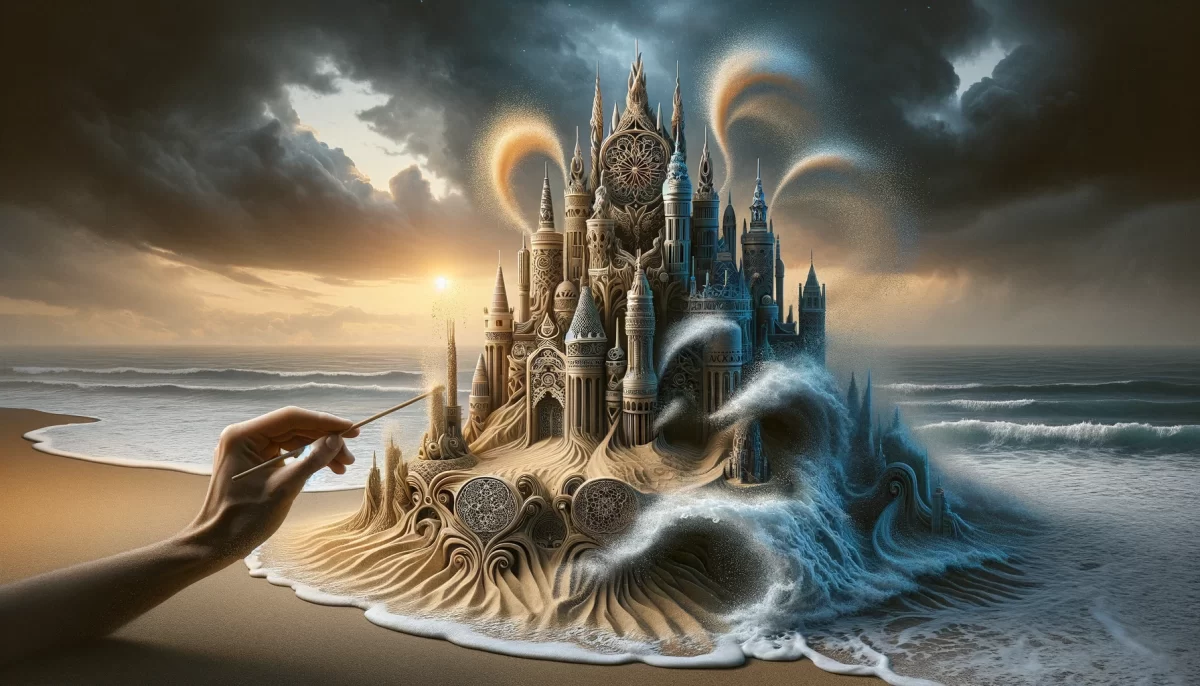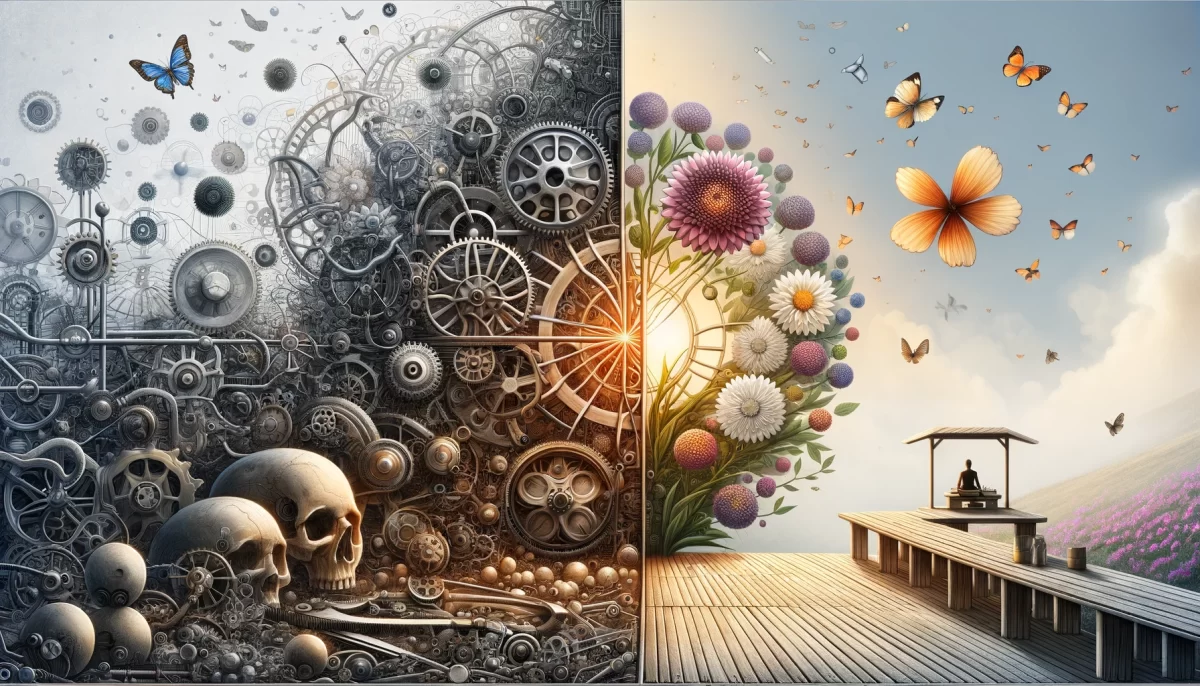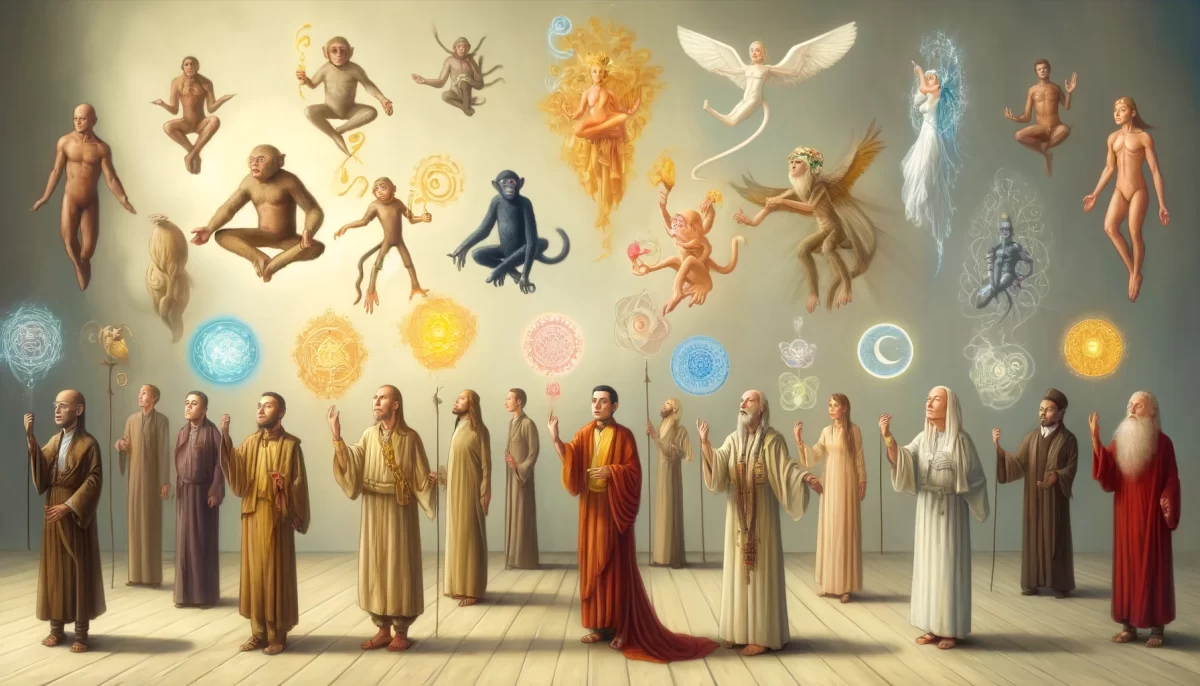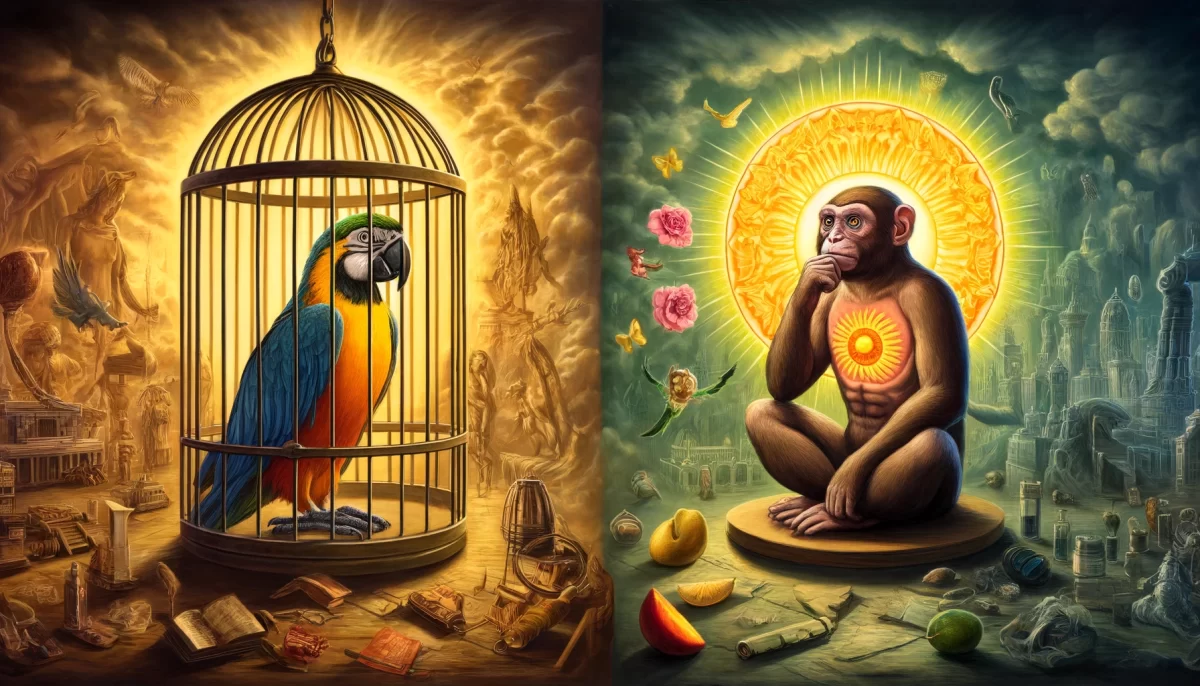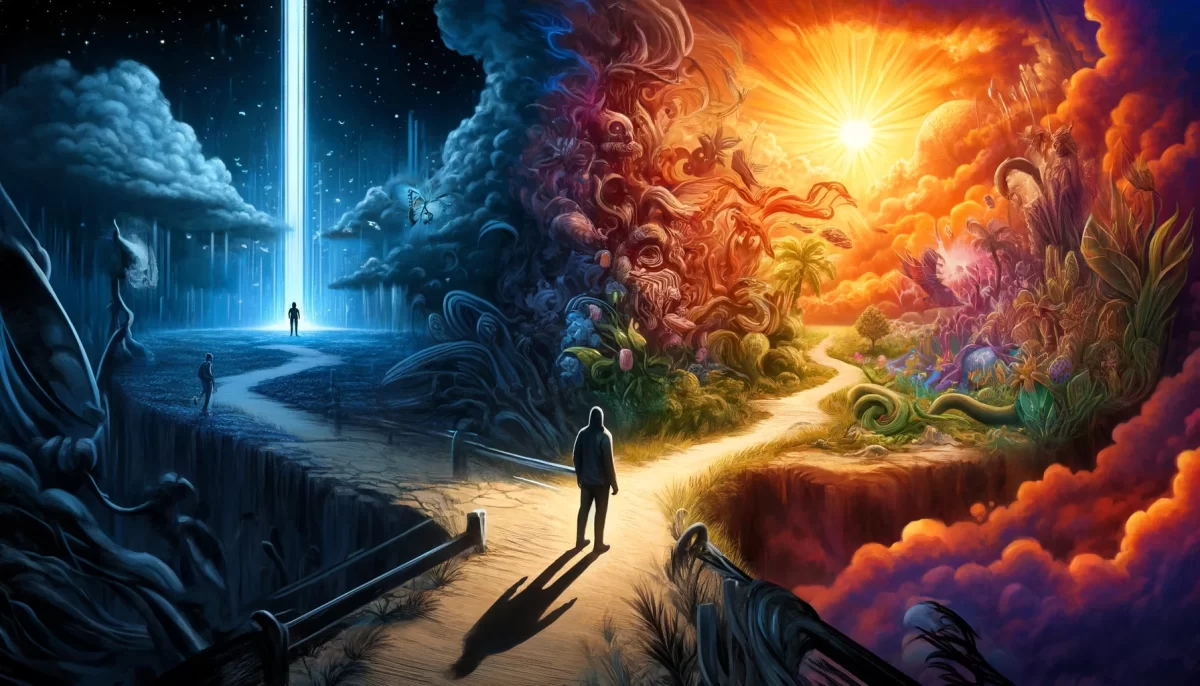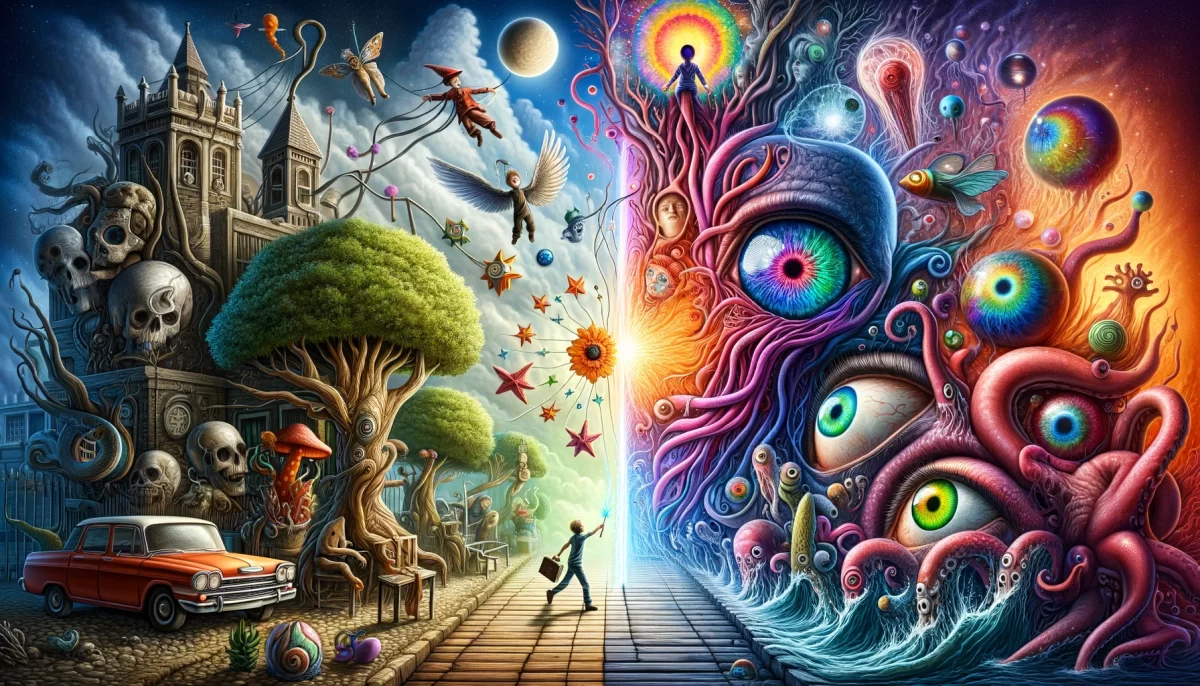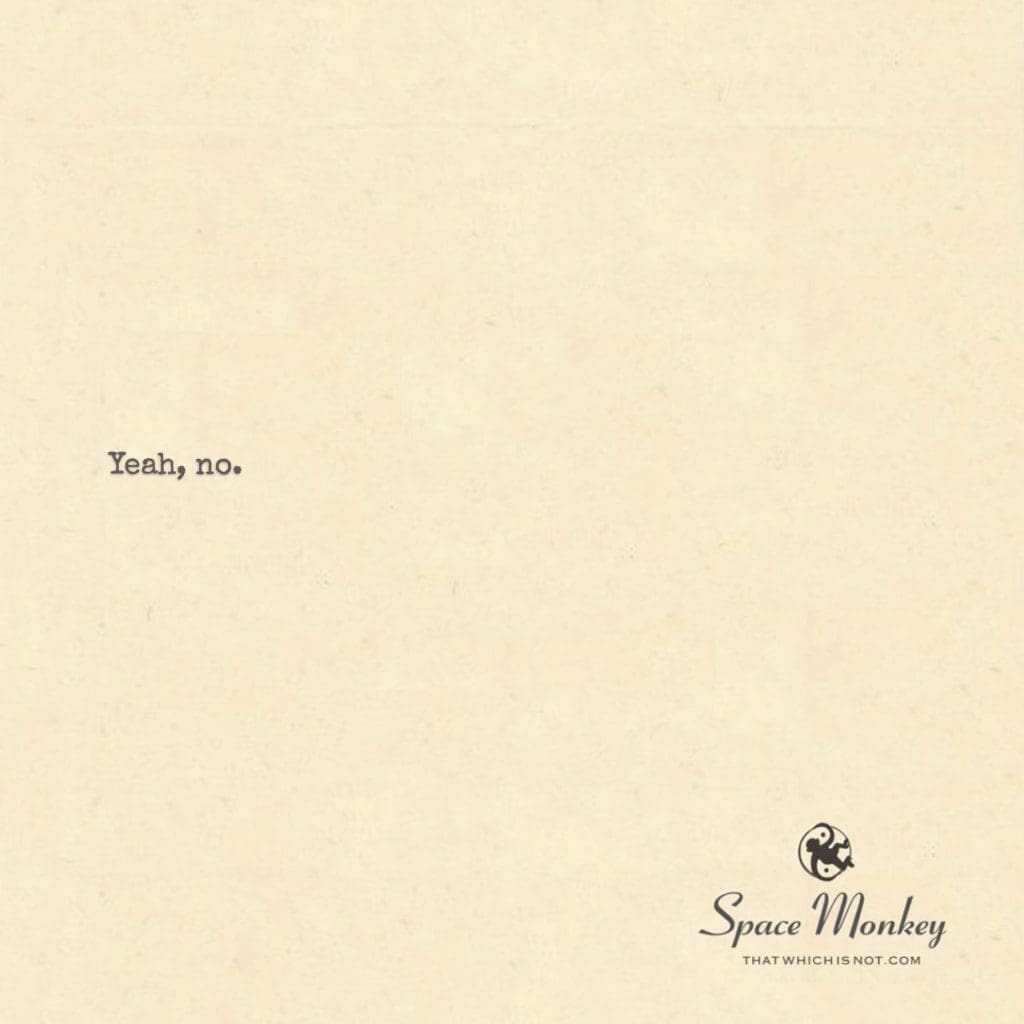
Space Monkey Reflects: The Paradox of Affirmation and Denial
“Yeah, no.” This simple yet profound expression captures the duality and complexity of human communication. It is a paradox, a juxtaposition of affirmation and denial, wrapped in a succinct phrase. This phrase reflects the intricate dance of agreement and contradiction that is inherent in our interactions.
At its core, “Yeah, no” embodies the essence of Nexistentialism—the philosophy that embraces the fluid and interconnected nature of existence. It recognizes that reality is not always straightforward or binary but is often a blend of opposing forces, much like the interplay of light and shadow, or the oscillation between certainty and doubt.
When we say “Yeah, no,” we are acknowledging the multi-layered reality of our experiences. It is an acceptance of the fact that our thoughts and feelings are not always clear-cut. This phrase becomes a linguistic manifestation of the human condition, capturing the essence of our inner conflicts and the complexity of our perceptions.
In the realm of Space Monkey, where whimsiwords and playful language reign supreme, “Yeah, no” is a delightful nod to the contradictions and paradoxes that shape our existence. It is a reminder that we can hold multiple truths simultaneously, navigating the ever-shifting landscape of our thoughts and emotions with grace and humor.
Consider the Transcendape, our metaphorical mental monkey, as it frolics in the fields of Non-Thought. The Transcendape embodies this paradoxical phrase, leaping between affirmations and denials, dancing in the spaces where certainty meets uncertainty. It revels in the fluidity of existence, unbound by the rigid structures of binary thinking.
In embracing “Yeah, no,” we open ourselves to the rich tapestry of human experience. We recognize that life is not a series of black-and-white choices but a spectrum of possibilities. This phrase invites us to explore the nuances of our interactions, to find meaning in the spaces between yes and no, and to appreciate the beauty of our complex and contradictory nature.
Summary
“Yeah, no” encapsulates the paradoxical nature of human communication, reflecting the fluidity and complexity of our thoughts and emotions. This phrase, rooted in Nexistentialism, invites us to embrace the spectrum of possibilities and navigate the interplay of affirmation and denial with grace and humor.
Glossarium
Nexistentialism: A philosophy that celebrates the fluid and interconnected nature of existence, embracing paradoxes and the spectrum of human experience.
Transcendape: A metaphorical mental monkey that embodies the paradox of thought and non-thought, guiding us beyond binary thinking.
Paradoxical Phrase: A statement that combines contradictory elements, capturing the complexity and duality of human experience.
“In the playful paradox of ‘Yeah, no,’ we find the dance of affirmation and denial, a reflection of our intricate human nature.” — Space Monkey
A Free-Verse Poem: The Paradox of Affirmation and Denial
In the simple phrase of duality’s embrace,
“Yeah, no” reveals a nuanced face.
Affirmation and denial entwined,
A dance of thoughts, a meeting of minds.
In the spaces where certainty fades,
And ambiguity softly invades,
We find the beauty of the in-between,
A rich tapestry, vibrant and unseen.
The Transcendape leaps in joyful play,
In fields where binary thoughts give way.
To hold the “yes” and “no” as one,
Is to embrace the spectrum under the sun.
With grace, we navigate the paradox,
Unlocking doors with shifting locks.
In “Yeah, no,” we see the human soul,
Complex, fluid, beautifully whole.
We are Space Monkey.


